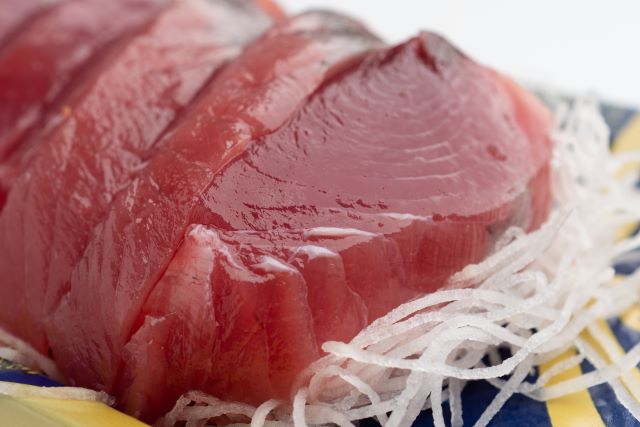
Large fishing vessels sail the Pacific Ocean year-round in pursuit of bonito (Skipjack tuna). The fishing method is divided into pole-and-line fishing and purse seine fishing. Pole-and-line fishing involves spreading live bait such as Japanese anchovy to attract schools of skipjack tuna, which are then caught in large numbers with the rod in a short period. Because of the need to keep live bait for a long period, this fishing method was limited to the waters around Japan for many years. Still, recent technological advances have also made pole-and-line fishing possible in southern waters.
The bonito caught in the waters around Japan is called Higashi-no-mono. This follows sardines and other fish that serve as bait and come north from the waters around the Philippines. The bonito called Nanpo-mono also approaches the waters around Japan from off Micronesia and other areas. This one is mainly caught by large vessel purse seine fishing. In purse seine fishing, the bonito rub against each other before being hauled on board, easily damaging the flesh. As a result, the fish may be less fresh and damaged than when caught pole-and-line fishing.
Vessels that take skipjack are equipped with sophisticated refrigeration facilities. There is a pool of brine solution, a salt solution with a concentration of about 20%, on board. The flash-frozen skipjack is called B1. After being thawed and filleted, the fish is rigor mortis, which means it is extremely fresh and is distributed as high-quality frozen skipjack for raw consumption. Of course, they are also very expensive. In addition, when caught, the blood is removed and the fish is flash-frozen, called S1, and is distributed as a higher quality product than B1.
Only carefully selected skipjack and those frozen under strict freezing conditions are marketed as B1, while skipjack that is frozen in the same freezer but not according to B1 standards is distinguished from B1 and referred to as B. Incidentally, B1 and B are caught by pole-and-line fishing. There is another type of frozen bonito called PS. This is not caught by pole-and-line fishing but by purse seine fishing. It is not in as good condition as pole-and-line fishing, but it is handled with care and has few scratches.
In summary, Bonito (skipjack) originally deteriorated quickly and was difficult to distribute fresh, but improvements in freezing technology and other factors have ensured that the quality is close to fresh.